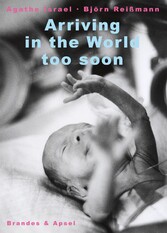Search and Find
Service
Our Research Approach
How can one approach the experience of premature babies? The idea of observing premature babies directly after their birth in the clinic first arose several years ago and was realised thanks to the generosity of staff at a Berlin centre for neonatology.
The research approach is based on the method of participative infant observation, as it was introduced into the training programme for child psychologists by Esther Bick in 1948 in the Tavistock Clinic in London and further developed by Martha Harris and Donald Meltzer. The method is in the meantime employed world-wide, naturally including Germany. Meltzer (1967) assumed that all experiences accumulate and develop within the individual, that they are therefore processed, and that these processed experiences determine present behaviour.
One form of access to the processes involved in the construction of the psyche (Lazar 1986), is possible through infant observation. Normally, a baby is observed in its natural surroundings from birth until the end of its second year once a week for one hour focusing on the question: How does this child feel within this family?
One is usually observing the mother-child relationship but the main focus is on the child. The younger it is the more difficult the observation because the affects it displays are incredibly moving.
The observer does not intervene in the situation in any way, but is merely present. Each observation is recorded in a memorandum and regularly discussed among a group of other observers. The group becomes a thinking receptacle for the observer, and makes it possible to sense non-comprehension and non-awareness and use this creatively. Theoretical reflections may enter into proceedings, but the focal point remains the individual inner world of the baby being observed. This discussion is also recorded in written form, and once the observation period has come to an end, a summarising report is compiled. This is chiefly concerned with how the baby developed within the framework of his relationships, how the observer found an appropriate inner and outer place for the observation and what projective processes (e. g. what phantasies and roles were assigned to him) and what trans-generational issues arose within the family (e. g. unconscious expectations and experiences of previous generations).
All prices incl. VAT













